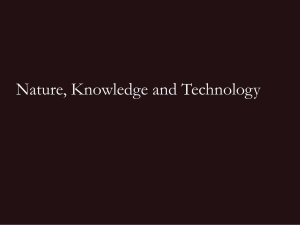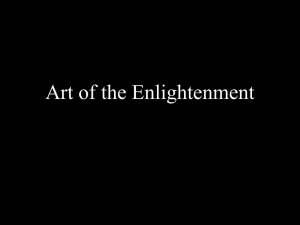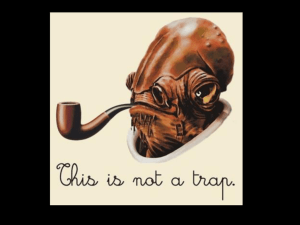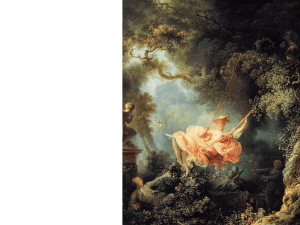Genre Paintings Hogarth_ Wright_ Greuze_ Fuseli
advertisement
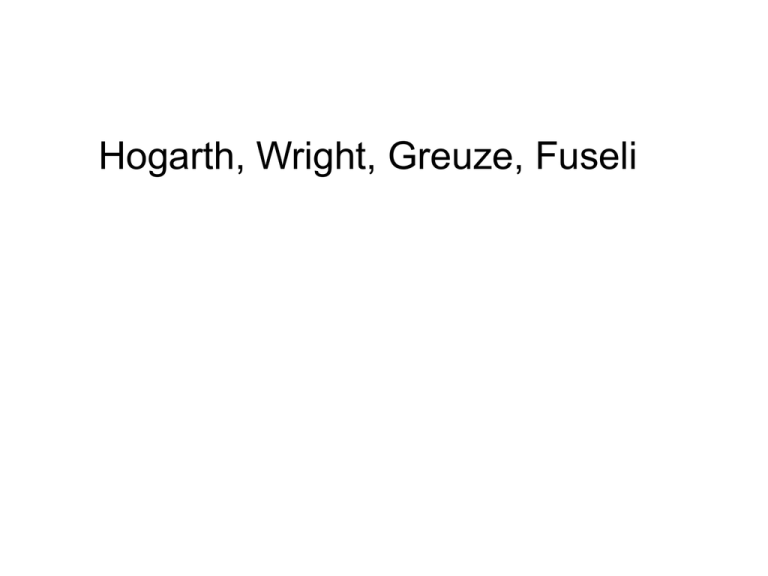
Hogarth, Wright, Greuze, Fuseli Genre Painting: satire “Aren’t the upper classes stupid?” William Hogarth William Hogarth A Scene from the Beggar’s Opera 1728-1729 oil on canvas William Hogarth Marriage à la Mode 1743 oil on canvas William Hogarth Marriage à la Mode 1743 oil on canvas William Hogarth An Election Entertainment 1754 oil on canvas Genre Painting: “Science is really, really cool!” Joseph Wright Joseph Wright A Philosopher Lecturing with a Mechanical Planetary 1766 oil on canvas Joseph Wright An Experiment on a Bird in the Air Pump 1768 oil on canvas 6’ x 8’ Genre Painting: drame bourgeois “middle-class drama” Jean-Baptiste Greuze Jean-Baptiste Greuze Filial Piety 1763 oil on canvas Jean-Baptiste Greuze L'Accordée de Village 1763 oil on canvas Jean-Baptiste Greuze The Father's Curse: The Ungrateful Son 1777 oil on canvas Jean-Baptiste Greuze The Father's Curse: The Son Punished 1777 oil on canvas Jean-Honoré Fragonard The Stolen Kiss Jean-Baptiste Greuze 1769 Septimius Severus and Caracalla oil on canvas Romanticism John Henry Fuseli Romanticism Romanticism is a complex artistic, literary, and intellectual movement that originated in the second half of the 18th century in Western Europe. In part, it was a revolt against aristocratic social and political norms of the Age of Enlightenment and a reaction against the scientific rationalization of nature, and was embodied most strongly in the visual arts, music, and literature, but can be detected even in changed attitudes towards children and education. The movement validated strong emotion as an authentic source of aesthetic experience, placing new emphasis on such emotions as trepidation, terror, horror and awe—especially that which is experienced in confronting the sublimity of untamed nature and its picturesque qualities, both new aesthetic categories. Romanticism In European painting, led by a new generation of the French school, the Romantic sensibility contrasted with the neoclassicism being taught in the academies. In a revived clash between color and design, the expressiveness of color, as in works of Turner, Gericault, and Delacroix, was emphasized in the new prominence of the brushstroke and impasto and in the artist's free handling of paint, which tended to be repressed in neoclassicism under a self-effacing finish. In literature—among others—Edgar Allan Poe, Nathaniel Hawthorne, Johann Wolfgang von Goethe, William Wordsworth, Samuel Taylor Coleridge, William Blake, Lord Byron, Percy Bysshe Shelley, Mary Shelley, and John Keats. John Henry Fuseli The Nightmare 1781 oil on canvas John Henry Fuseli The Shepherd’s Dream 1793 oil on canvas John Henry Fuseli Silence 1799-1801 oil on canvas John Henry Fuseli Lady MacBeth 1784 oil on canvas John Henry Fuseli The Artist Moved by the Grandeur of Antique Fragments 1778-79 red chalk on sepia wash

